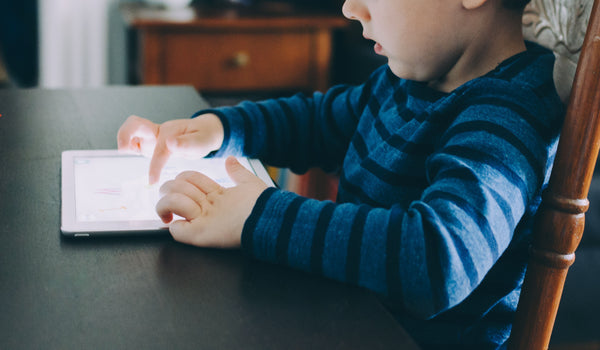7 Steps to Increase Your Child's EQ

As parents, it's natural to want to do all that you can to prepare your children to have the brightest futures possible. This includes ensuring they have opportunities for a good education. While intelligence is an important factor for a child's future success, emotional intelligence is even more important. Beyond IQ, a person's emotional intelligence score, (EQ or emotional quotient), is what sets the most successful apart from the crowd. The best part about EQ is that it can improve over time with a bit of effort. There are a variety of ways to increase a child's emotional intelligence, and upon doing so one should hope to see greater engagement in the classroom paired with higher grades. In an effort to help parents increase the EQ of their children and better equip them for success, we've highlighted 7 practical interventions you can do with your children to increase their emotional intelligence now.
#1 Identify Your Parenting Style
Whether you realize it or not, there are 4 different ways that parents can impact the emotional intelligence of their children based upon the ways they react to emotions. Dr. John Gottman identified four different parenting styles:
Emotion coaching parents tend to raise children with the highest emotional intelligence scores. Should you find that your style is not 100% in line with an emotion coaching parent, there is no need to worry. By following steps two through seven you should be well on your way toward helping your child develop greater emotional intelligence.
#2 Be Aware of Your Child's Emotions
Now that you've identified your parenting style, being aware of your child's emotions is the second step toward increasing his/her EQ. Whenever you notice that your child appears to be feeling strong emotions or having an emotional reaction, take note. This is the perfect opportunity to teach and bond with your child. Be aware of anything that comes up for you in this moment, as your go-to response may not be to teach and bond. So long as you are able to hold space for your own reactive feelings, take a pause, and redirect, you can use each emotional outburst as an opportunity for learning and growth for your child.
#3 Take Time for Teaching and Observing Emotions in Day-to-Day Life
Once you've identified your child's emotions and taken a pause for learning and bonding, it's time to teach your child about what is happening inside him/her. You may also notice strong emotions that arise in movies or videos your child watches, or within others while you are out in public. If you're able to pause and reflect upon these real-life examples you will be helping equip your child with tools needed to be more aware of self and empathetic of others.
#4 Listen, Validate, and Label Moods and Emotions
Once you've identified a real-life example of an emotion or mood and taken a pause to use it as a lesson, it's time to listen to what your child has to say about the emotion. If your child is feeling the emotion, it's important to allow him/her to express what is happening. If it's another person experiencing the emotions, allow your child to describe what is being observed. Once a child has time to express what is happening it's important to validate the emotion for the child. No emotion should be labeled “bad,” as it's not wrong to feel negative emotions, but acting out in negative ways is where problems arise. Once the child receives validation it's important to assist the child in labeling the mood or emotion. An emotions list is a very helpful tool when helping children to identify a variety of different moods and emotions.
#5 Assist in Problem-Solving
Once a child has learned to identify his/her emotions, it's time to teach problem-solving skills and set boundaries outlining which behaviors are appropriate in the face of strong feelings, and how to manage urges toward engaging in behaviors that are not productive or helpful. Allowing children to brainstorm solutions for managing strong emotions, and set goals for how they would like to manage emotions in the future is also helpful.
#6 Use CARS for Intense Emotional Reactions
Throughout this process, there's a good chance something in life will spark a strong emotional reaction or tantrum in your child. This is normal. When it happens, reinforce what's been taught using the CARS technique.
Connect: Listen, understand, and empathize
Alternative solutions: Walk children through the problem-solving process
Respond: Respond in a BIFF manner (Brief, Informative, Friendly, Firm)
Set limits: Set limits and maintain boundaries concerning the child's reactions. Do not allow him/her to throw things or become violent, etc.
#7 Use Visual Aids As Emotional Learning Tools
While teaching children in the face of an emotional reaction is powerful, it's also helpful to use visual aids for teaching children about moods/emotions and reinforcing what they've learned. Mood bands, emotions posters, and books are all wonderful tools, especially when designed specifically for teaching children about emotional intelligence.
Written by Jayna Nickert, MBA, MFT. Jayna is a writer, integrative therapist, and entrepreneur residing in San Diego, CA. When she isn't writing or playing with her dogs at the beach, she enjoys helping children and adolescents. As a therapist in a prep school setting, she's equipped junior high and high school students with the tools needed to process and manage symptoms of depression, anxiety, stress, bereavement, and trauma.
Also in Blogs

Does Your Child Live in a High-Conflict Environment?

“What's On?” The Impact Of Media On Kid's Emotional Well-being

